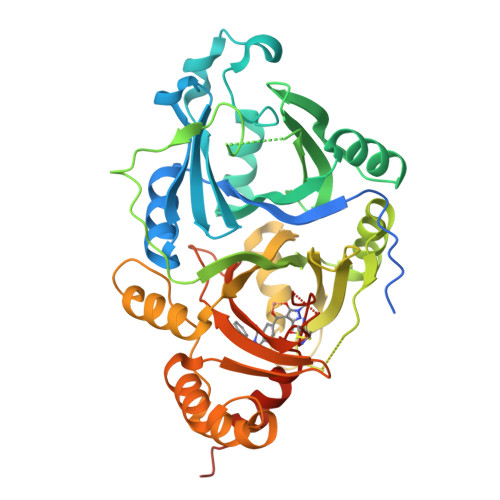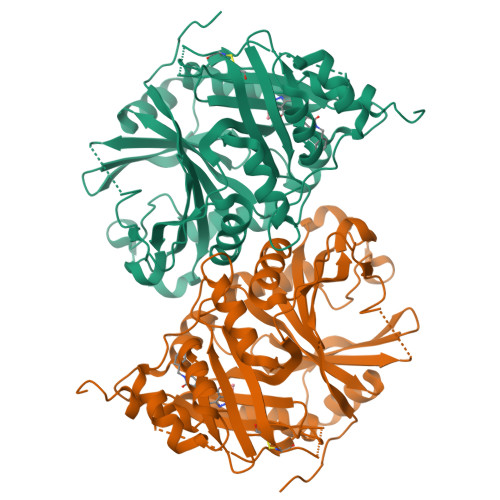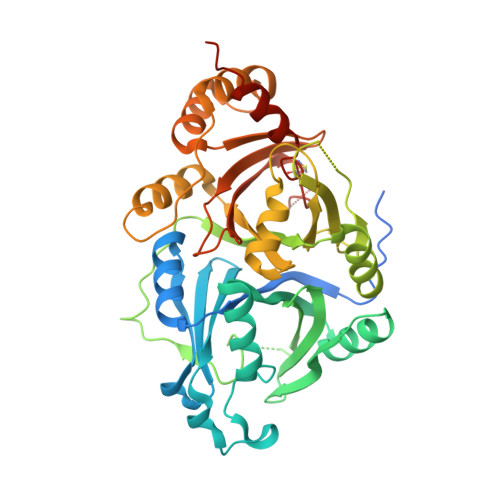Pyrazole-Isoindoline-1,3-dione Hybrid: A Promising Scaffold for 4-Hydroxyphenylpyruvate Dioxygenase Inhibitors.
He, B., Dong, J., Lin, H.Y., Wang, M.Y., Li, X.K., Zheng, B.F., Chen, Q., Hao, G.F., Yang, W.C., Yang, G.F.(2019) J Agric Food Chem 67: 10844-10852
- PubMed: 31525997
- DOI: https://doi.org/10.1021/acs.jafc.9b04917
- Primary Citation of Related Structures:
6JX9 - PubMed Abstract:
The discovery of 4-hydroxyphenylpyruvate dioxygenase (HPPD, EC 1.13.11.27) inhibitors has been an active area of research due to their great potential as herbicides for weed control. Starting from the binding mode of known inhibitors of HPPD, a series of HPPD inhibitors with new molecular scaffolds were designed and synthesized by hybridizing 2-benzoylethen-1-ol and isoindoline-1,3-dione fragments. The results of the in vitro tests indicated that the newly synthesized compounds showed good HPPD inhibitory activity with IC 50 values against the recombinant Arabidopsis thaliana HPPD ( At HPPD) ranging from 0.0039 μM to over 1 μM. Most promisingly, compound 4ae , 2-benzyl-5-(5-hydroxy-1,3-dimethyl-1 H -pyrazole-4- carbonyl)isoindoline-1,3-dione, showed the highest At HPPD inhibitory activity with a K i value of 3.92 nM, making it approximately 10 times more potent than pyrasulfotole ( K i = 44 nM) and slightly more potent than mesotrione ( K i = 4.56 nM). In addition, the cocrystal structure of the At HPPD- 4ae complex was successfully resolved at a resolution of 1.8 Å. The X-ray diffraction analysis indicated that the two carbonyl groups of 2-benzoylethen-1-ol formed a bidentate chelating interaction with the metal ion, while the isoindoline-1,3-dione moiety formed pronounced π-π stacking interactions with Phe381 and Phe424. Moreover, water-mediated hydrogen bonding interactions were observed between Asn282 and the nitrogen atoms of the pyrazole ring of 4ae . The above results showed that the pyrazole-isoindoline-1,3-dione hybrid is a promising scaffold for developing HPPD inhibitors.
Organizational Affiliation:
Key Laboratory of Pesticide & Chemical Biology of Ministry of Education, International Joint Research Center for Intelligent Biosensor Technology and Health, and Chemical Biology Center, College of Chemistry , Central China Normal University , Wuhan 430079 , P.R. China.




















